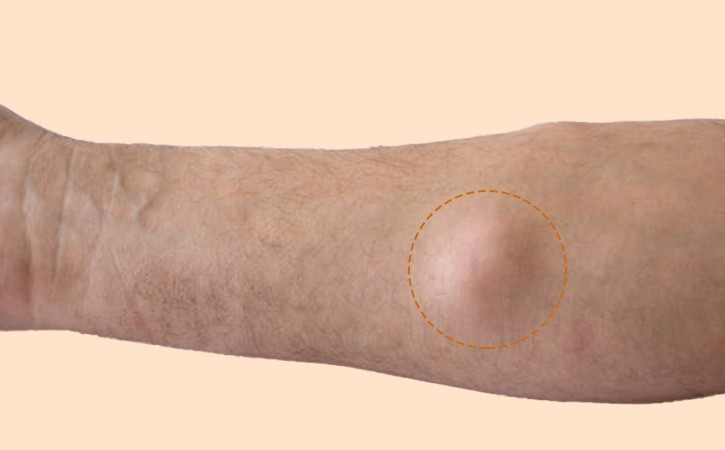Lipoma: What is it?
Occasionally, a fatty, protruding lump may be felt under the skin. It is not tender and moves when pressure is applied to this doughy bulge. Are you curious about this? Lipoma could be the cause.
Lipoma causes are multiple, often pushing people into situations where they cannot quite grasp what’s happening and inadvertently ignore its presence. For this, lipoma diagnosis is extremely important.
Lacking knowledge of such a state can be painful for someone suffering from this condition. Multiple lipoma treatments are available that are convenient and safe to perform. It is always better to go for a lipoma diagnosis early to begin treatment. For more information, keep reading.
The signs and symptoms of lipoma
It’s critical to comprehend the definition of lipoma before learning more specifics regarding its symptoms and course of treatment. Knowing what causes the fatty lumps helps ease up the process of treatment for the person suffering from this condition, as well as the doctor. This fatty mass expands gradually.
It develops between the top layer of muscle and the skin. The overgrowth of fat cells may be to blame for this. Out of the multiple lipoma treatments available, you can go for lipoma removal surgery to get rid of it most easily. The lipoma surgery cost varies from place to place and condition to condition.
We become anxious if a lump develops in our body. This development is malignant.
But calm down! A benign tumour is a lipoma. There is no need to worry because they are not malignant. These bumps enlarge slowly. They can grow to a maximum size of about 3 cm. Sometimes they might be enormous, measuring up to 10 cm. These tumours can develop everywhere there are fat cells.
Nonetheless, they are more frequently observed on the chest and shoulders. To get rid of them, search for new treatments for lipoma. New technologies are working to ease up the surgical processes. You can look out for the best treatment for lipoma.
They usually exist on the thighs, neck, armpits, and trunk. Moreover, internal organs, bones, and muscles may exhibit them. But this is an unusual case.
Why remove a lipoma?
Every age can experience these bulges. Middle age is when they are more prevalent. There is no need for concern because they are not malignant. Even still, some people would still rather get rid of them. This is because, occasionally, they bring about anguish.
Other symptoms may appear in certain persons, and in rare circumstances, they may cause difficulties. Irrespective of the causes of lipoma, they can sometimes be quite troublesome.
The physical appearance is a further justification. One of the reasons for their removal is that no one likes to display fatty lumps. People would rather have them taken out.
Lipoma Causes
Now that you are aware of what a lipoma is, let’s examine the lipoma causes. Once you are aware of the causes, let’s move on to discussing the symptoms and available treatments.
The precise reason for this disease is unknown to doctors. The individual may have inherited the genetic flaw from their parents. Familial multiple lipomatosis is the name for this condition.
It’s possible for persons with medical illnesses like Gardner’s syndrome, Madelung’s disease, and adipose tissue could develop a lipoma. It’s also possible for people with fatty tissue and other musculoskeletal conditions.
Treatment options & Indices
Let’s now examine the signs and the available treatments.
Symptoms
- The gentle bulge in the person’s skin will be perceptible to them.
- Although it rarely hurts, there are some circumstances where it might. A bulge that is close to the joints will cause pain. Nerves, blood vessels, and organs. This makes the lipoma diagnosis crucial.
- The soft spot won’t be visible if the lipoma is under the skin. Yet, those symptoms will manifest if this internal lipoma places pressure on a particular organ, nerve, or blood vessel. Vessels could exist.
- Obesity, excessive cholesterol, liver disease, glucose intolerance and hyperglycemia are other risk factors that can result in this condition.
Diagnosis
A physical examination by the physician is planned. If the lipoma is particularly large, the doctor may need to send a tissue sample and perform an MRI or CT scan. If the lipoma is not troubling the patient, the doctor may advise the patient to keep an eye on it and return if there is an increase in its size or if it begins to do so.
But, if the lump is causing discomfort and other negative effects, it could need to be surgically removed. Bruising and scarring may be side effects, and it’s quite uncommon for lipomas to recur after surgery. The lipoma surgery cost depends on the state of the lipoma.
Treatment
It is always best to see a doctor when you see a bulge on your body. Whether it is, a lipoma or liposarcoma must be determined. Also, always go for the new treatments of lipoma to get the best results.
It should be mentioned that lipoma is not malignant; however, liposarcoma is. There may be accompanying symptoms if the tumour develops internally because you won’t be able to notice the enlargement. For instance, symptoms such as constipation may appear if the lipoma is close to the bowels.
You need to realise that there could be other lipoma causes for the symptoms you’re experiencing. You might also experience constipation. However, go for one of the multiple lipoma treatments available to get a cure. Make sure you are mentally prepared to get things done.
The doctor alone can diagnose this. Only one thing must be considered while choosing a lipoma surgeon: They must be capable of providing the best medical care. Choose a specialist with a track record of success treating this particular medical problem.


